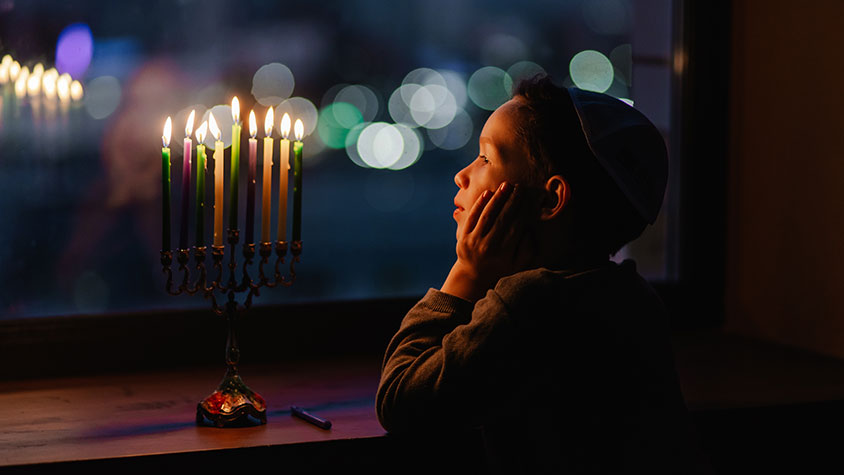Known as the “Festival of Lights,” the Hanukkah holiday is a very special time of year for Jewish people in Israel and all over the world.
The holiday originated over 2,000 years ago, when the Jewish people were ruled by the oppressive Syrian king Antiochus, who looted and desecrated the Jewish Temple in Jerusalem, outlawed the Jewish religion, and used harsh measures to force the Jews to worship Greek gods.
King Antiochus made many attempts to gain control of the Jews in Judea, to the point of forcing them to eat the forbidden flesh of a sacrificed pig from the temple altar. This effort only served to provoke a full-scale armed rebellion.
A man named Judah, nicknamed “the hammer” (“Maccabee,” in Hebrew) assembled a group of people to fight back. For three years, the Maccabees battled the Syrians for control of Judea and eventually won in 139 BC.
The Maccabees built a new altar and cleaned the Temple, removing all Greek symbols. According to tradition, when the Maccabean Jews came to light the temple’s menorah, a lampstand with seven branches, they discovered there was only enough oil to keep it aflame for one day. Miraculously, the one-day supply of oil burned for a full eight days, enough time for additional oil to be prepared. This miracle proved that God was once again with His people. The temple was rededicated to the God of Israel.
Hanukkah in Israel
In Israel, Hanukkah is traditionally observed for eight days and eight nights. Each year, the date changes because of the Jewish lunar calendar. But unlike other Jewish holidays, all attractions and stores remain open.
Keeping in mind that oil is central to the celebration, one of the features of Hanukkah is a lot of fried food. But if you are a donut lover, then Hanukkah will likely appeal to your palate. The most famous food during the holiday is the sufganiyot, a round donut filled with jam and usually dusted with powdered sugar. With an estimated 24 million eaten in Israel each year, sufganiyot is a staple.
And do not forget the hot and crispy latke, a shredded potato delicacy mixed with pancake mix and egg and fried to a luscious golden brown. These treats are always a crowd favorite, particularly among children, who can be found eating them while they play dreidel, a traditional Hanukkah game using a four-sided top with four Hebrew letters on each side.
One of Hanukkah’s iconic symbols is the menorah. Traditionally, a menorah—the Hebrew word for lamp—is a candelabrum with seven branches that was used in the ancient Temple in Jerusalem. But Hanukkah is actually celebrated by using a hanukiah (nine-branched lampstand). The hanukiah has nine branches to remind all who celebrate Hanukkah of the eight-day miracle from God, with one additional “servant light” from which the other candles can be lit.
While you can certainly enjoy Hanukkah during the daytime, the experience is even more enjoyable once the sun goes down. Strap on your walking shoes, and take advantage of special Hanukkah night walking tours, particularly in Jerusalem. As you walk, you can see the many hanukiot (plural of hanukiah) on display in the windows of private homes, storefronts, or public centers.
Hanukkah is one of the most festive of Jewish holidays, and almost everywhere you turn there are family-friendly musical productions, concerts, and dance productions.
Lighting of the Hanukkah Menorah – Western Wall (Kotel)
Every city in Israel has a large hanukiah on prominent display in the public square, on which an additional candle is lit on each night of the holiday.
One of the most famous hanukiah lightings is at the Western Wall (Kotel) in the Old City of Jerusalem. To see the Kotel wall ablaze with the lights of all eight nights—casting a warm, ethereal glow over the scores of celebrants—is an ideal way to end your Hanukkah celebration!
Experience the beauty of Hanukkah on your next trip to Israel!
Email Cindy at cindy@israeladvantagetours.com or
visit www.israeladvantagetours.com to plan your trip of a lifetime!










